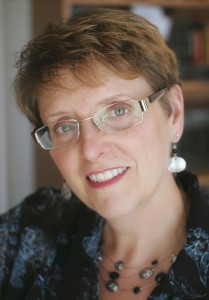 Ricki Heller is a holistic nutritionist, whole foods chef, writer and educator who shares sugar-free, gluten-free, allergy-friendly recipes and healthy living articles on her popular blog, RickiHeller.com. She is the author of Naturally Sweet and Gluten-Free and the brand new guide and cookbook Living Candida-Free. Through her live talks and presentations at expos and various healthy living events, Ricki shares her own story of learning to thrive on an anti-candida diet and shows audiences how easy it is to eat well on a “restricted” diet—proving that a healthy lifestyle can, indeed, be sweet!
Ricki Heller is a holistic nutritionist, whole foods chef, writer and educator who shares sugar-free, gluten-free, allergy-friendly recipes and healthy living articles on her popular blog, RickiHeller.com. She is the author of Naturally Sweet and Gluten-Free and the brand new guide and cookbook Living Candida-Free. Through her live talks and presentations at expos and various healthy living events, Ricki shares her own story of learning to thrive on an anti-candida diet and shows audiences how easy it is to eat well on a “restricted” diet—proving that a healthy lifestyle can, indeed, be sweet!
I recently had the chance to chat with Ricki, and we talked about veganism, living candida-free, and food!
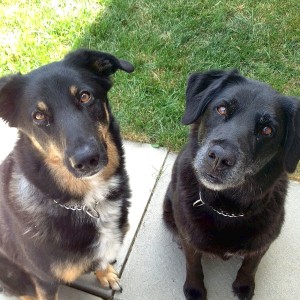 Chic Vegan: What motivated you to become vegan? Was it an overnight switch or more gradual shift?
Chic Vegan: What motivated you to become vegan? Was it an overnight switch or more gradual shift?
Ricki Heller: I actually ate a vegan diet before I knew what “vegan” was. Growing up and as a young adult, I always preferred a vegetarian diet; and then when I went away to university, I more or less became vegan (except that term wasn’t as well-known as it is today back then). I ate that way because it was what I preferred in terms of taste and what felt right to me. After I studied different types of diets in nutrition school and began to understand more about the meat industry and how animals were raised, I decided eating animal products wasn’t such a great idea, anyway. But there was never any major switch—cutting out eggs or cheese was something I had pretty much begun to do naturally, anyway, and it didn’t feel like a huge transition at all to me. This way of eating feels like the most natural diet I’ve ever followed.
CV: When people learn that you are vegan, what is the #1 question they ask and what is your response?
RH: The most common question I get is, “What do you EAT?”! I think it relates more to the fact of the anti-candida diet, in reality, than the fact that I eat a plant-based diet, which is much more mainstream these days. I think people are often accustomed to what they habitually consume, and so it can be difficult to imagine someone else consuming meals that are entirely different or lacking half the ingredients you’re used to.
Usually, my response is something along the lines of, “Are you kidding? I eat everything—my diet is more varied and abundant now than it was before I made the switch.” And of course once I share my recipes and food with friends, they see how good it tastes, and they don’t wonder any longer!
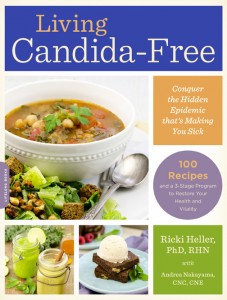 CV: Tell me a little bit about your new book Living Candida-Free and what inspired you to write it.
CV: Tell me a little bit about your new book Living Candida-Free and what inspired you to write it.
RH: This book was a natural outgrowth of what was going on in my life. I had already started a food blog about a year before my latest bout with candida, and then when I had to change my diet so drastically, I began to chronicle what I ate and my experiences. I was amazed at how many people were actually interested in this, and my blog audience really began to grow at that time. So, when I was approached by Da Capo to write a book about candida, it was a no-brainer for me.
My primary goal with the book was to provide a practical manual, so to speak, for how to live well on the anti-candida diet. I wanted others to avoid all the pitfalls and problems I had trying to integrate this diet into my “real life,” so I included all the information I wish had been available when I first started: how do you continue to socialize on this diet? What about travel? What about work? How can you find time to fit it all in without spending the entire day in the kitchen? What about cooking with all these new ingredients? How do I substitute for my regular recipes?—and so on. These are all things we cover in my Candida Kick-Start course as well, though in a much more personal in-depth manner, as a way to get people off on the right foot with the diet.
I also really wanted this book to be different from the other ones out there, and I think it is, in two important ways. First, Living Candida-Free is the only anti-candida book that provides 100% plant-based recipes and is totally vegan-friendly. This means that everyone, whether or not they eat meat, can enjoy the foods in the book.
Previously, whenever I’d seen a book about candida, the advice to vegans was to “take out the animal products.” But oftentimes all that was left then was a plate of vegetables, without any real protein. Andrea Nakayama, who collaborated with me on the book, provides guidelines for omnivores who wish to add animal products to the recipes in the book.
The other major difference is the point I made above—Living Candida-Free offers tips, tricks and techniques for living well in the real world. For many of us, the diet is going to be something we follow long-term, and I think it’s really important not to feel deprived, and to feel as if you can continue to live a normal life while following the protocol.
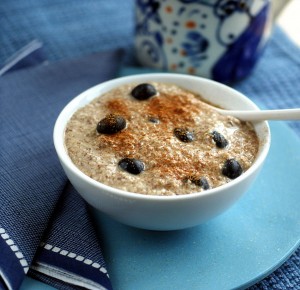 CV: Do you have any favorite recipes in the book?
CV: Do you have any favorite recipes in the book?
RH: You mean besides “all of them”? 😉 I guess if I had to choose, I’d say that the S’mores Parfaits are one of my current favorites, because I just made them today. I also love the Tangy Cashew Cheese, the Grain-Free Pizza, the Almost-Instant Grain-Free Porridge, the Beans Paprikash, the Raw Chocolate Chip Cookie Dough Truffles, the Fluffy Pancakes . . . see, I told you it was all of them!
CV: What’s the number one tip you would give to someone who suspects she/he has candida?
RH: I’d say there’s no harm in trying the protocol for 3 or 4 weeks and seeing if it makes a difference. This diet is actually totally nutritionally sound, and would be beneficial as a cleansing diet for anyone. So, if you think you’re dealing with candida, you might as well give it a go and see if it helps. You could also try what is the simplest, quickest, and cheapest test you can take at home to give you a rough idea if you have candida overgrowth: what’s commonly called the “spit test.”
To do the test: Upon waking and before you eat, drink or brush your teeth, you take a glass of water and spit into it. Take a look at the glass about 15 minutes later and then about 30 minutes later. If the spit has begun to extend downward in what looks like “legs” or roots toward the bottom of the glass, that’s a sign of candida. If the spit simply floats at the top of the water, you’re all clear.
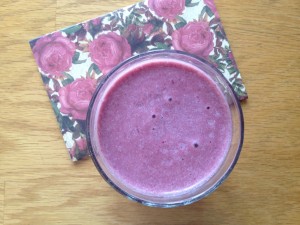 CV: When you were diagnosed with candida, did you worry about the new limitations to your diet or were you ready to take on the challenge?
CV: When you were diagnosed with candida, did you worry about the new limitations to your diet or were you ready to take on the challenge?
RH: Honestly, my health and symptoms were so bad at that point, I wouldn’t have cared if someone said to me, “you have to chew wet newspaper and nothing else for 30 days and then your candida will be gone”—I would have done it! So no, I didn’t worry too much beforehand.
I do remember being really overwhelmed by all the rules and new foods I’d be trying, but I was totally willing to give it a go if it helped. It was after I’d been eating that way for a while that I began to wonder how I could expand my repertoire of ACD-friendly recipes and avoid boredom and burnout. Cooking this way can be very time-consuming, so you have to find shortcuts and ways to make it easier on yourself.
CV: I know that you eat gluten-free and sugar-free. Are you still following an anti-candida diet?
RH: The short answer is, “yes,” although my diet today is very different from the diet I followed for the first six months when I was very strict and healing from the condition. I’ve since re-introduced many fruits, flour products, the occasional low-glycemic sweetener like coconut sugar, and a bunch of other foods. But will I ever eat white sugar or white flour again? Nuh-uh.
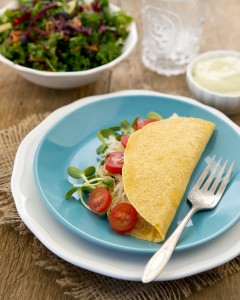
CV: What do you typically eat in the span of a day?
RH: A typical day might start with my single-serve high protein pancakes or a smoothie, always accompanied by a mug of matcha tea and what my husband calls my “green slime,” or a slurry of ground flax, chia, and spirulina or greens powder with some kind of nondairy milk. I got in the habit of eating flax and chia daily when I was treating my IBS and I find the extra fiber and omegas work well for me, so I’ve kept up with it. (If I’m having a smoothie that day, I add the seeds to the smoothie).
For lunch, I’ll often have leftovers from the night before, like a veggie patty with kale salad, or something with beans and vegetables, like raw collard wraps with hummus and veggies or chili with chard added to it. For dinner, we might have a stew like the Beans Paprikash in Living Candida-Free, or for a really quick dinner, a “Toronto Sandwich” (chickpea crepe stuffed with whatever we have on hand—say some grilled tofu, salad greens, sauerkraut and avocado.). That recipe is also in the book and on my blog, here. I always add some lacto-fermented sauerkraut (or kimchi) to meals, sometimes twice a day but always once a day for the abundance of probiotics they confer.
I limit my fruit to no more than one a day, but often don’t even have that, except in summer when I do consume more fresh fruits. Dessert in general seems to depend on what kind of recipes I’m developing at the time—when I’m working on a dessert recipe, we tend to eat that for dessert, but otherwise I nab a bit of chocolate or don’t have any. I also like to bring a pot of herbal tea up to the office with me during the day and after dinner when I usually continue working for a couple of hours.
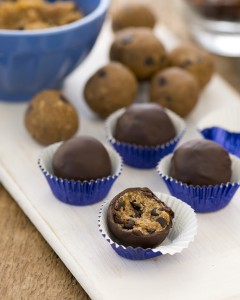
CV: What is your favorite vegan indulgence?
RH: Do you really have to ask?! It’s chocolate, in any form I can get it. I make my own stevia-sweetened raw chocolate, but more often, I’ll have chocolate almond butter on my morning pancake, or an ACD friendly brownie, or chocolate ice cream for dessert. I probably eat something with chocolate in it 5 out of 7 days a week.
CV: In your wildest dreams what will your life look like in 5 years?
RH: I had to think about this for a bit because, you know what? It will look basically like what it looks like now. Well, except in a nicer house and with a warmer climate.
In terms of work, I’d love to expand my recipe development to work with companies whose products I really love and can endorse, like some of the superfood ingredients and anti-candida ingredients that I literally use every day. I’d also love to write more, perhaps even get back to my fiction writing, as I’ve got scores of manuscripts on my computer and in hard copy in boxes in the basement that I haven’t looked at in years.
And of course I look forward to continuing to help people adjust to eating and living well within their dietary restrictions, in a way that feels fun and free without any sense of deprivation. It’s so incredibly gratifying to me when someone I’ve worked with tells me they love what they’re eating (even on a “restricted” diet) and their health issues have resolved. Nothing beats knowing that I had a small part in making that happen for them.
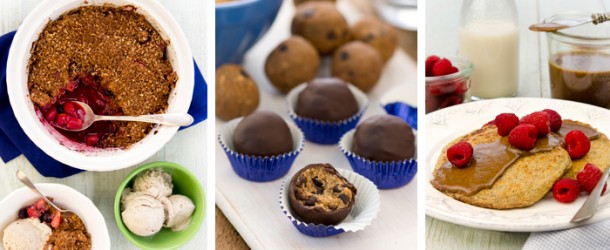
Dianne,thank you so much for this interview! These were really thought-provoking questions and I loved answering them for you and your audience. I hope they find it useful, too! 🙂
Thank you for participating, Ricki!